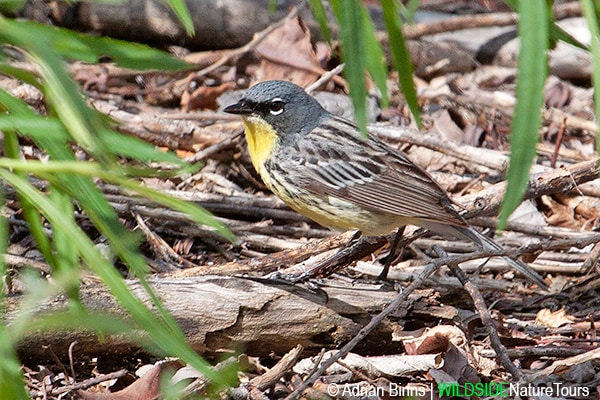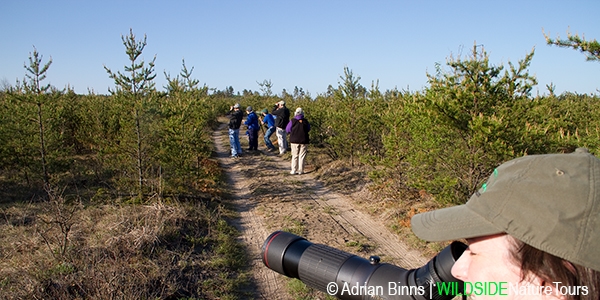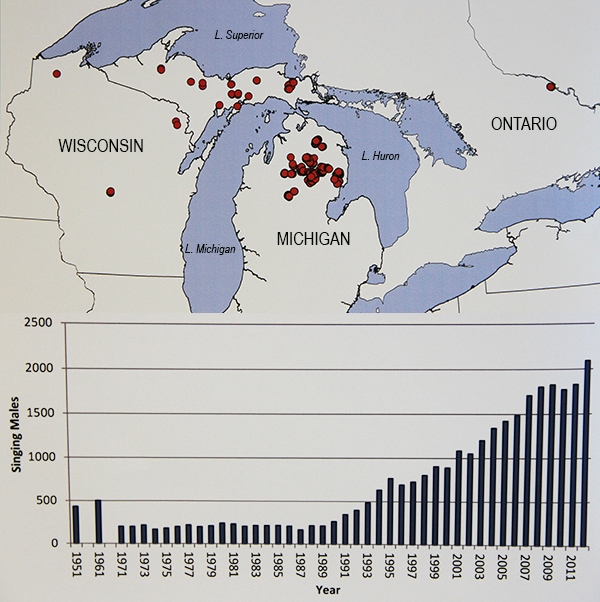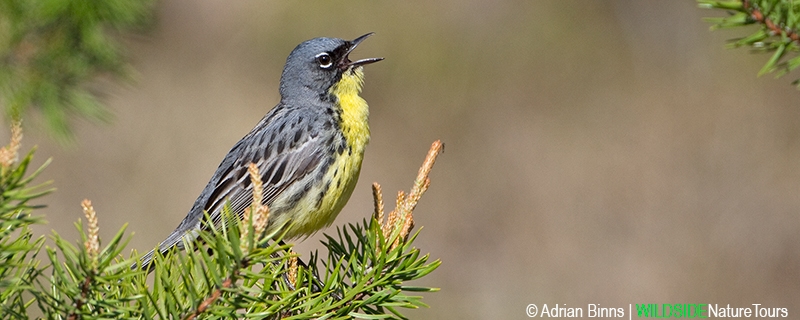
KIRTLAND’S WARBLER Thrills and Success
May 25, 2020 | by Adrian Binns
Kirtland’s Warbler is a major target for many birders. In North America, they are found nearly exclusively in Northern Michigan on their breeding grounds, requiring special effort to see them.
Like many neotropical migrants, Kirtland’s Warblers embark on a long migratory journey, leaving their wintering grounds in the Bahamas to fly 1,500 miles to the Jack Pines of lower northern Michigan. With perfect conditions in mid May, they complete the journey in about 5 days, with few stopovers along the way.

Male Kirtland’s Warbler at Magee Marsh, Ohio – May 14, 2010
We have been fortunate to encounter Kirtland’s Warbler on multiple occasions over the last 10 years, at Magee Marsh, on the southern shore of Lake Erie in NW Ohio, and environs. This is likely a last stop for the birds to rest and refuel before the final leg of its journey, and a chance to thrill hundreds of birders during the Biggest Week in American Birding. Kirtland’s prefer to forage low, on or near the ground, methodically looking for insects while continuously pumping its tail up and down. It’s song is wonderfully bold and melodic.
Kirtland’s Warblers require specific conditions for optimal breeding – large stands spanning over 150 acres of Jack Pines aged 5-15 years old, and 5-15 feet in height. Males arrive on the breeding grounds about a week before females and set up large territories singing from a high vantage point. They nest on the ground protected by the thick lower boughs of the pines.

On the breeding grounds watching Kirtland’s Warbler amongst Jack Pines
Such specialized habitat is difficult to maintain. Years of fire-suppression policy did not allow for natural growth of new and younger Jack Pines. Brown-headed Cowbirds further pressured dwindling populations by parasitizing their nests. In the 1970’s and 1980’s, their numbers had dropped to a low of 167 singing males. Kirtland’s Warbler was one of the first species to be listed under the Endangered Species Act, enacted in 1972. Intensive habitat management became a critical and effective tool for species recovery. Rotating controlled burns of Jack Pine stands allowed regermination of pine seeds; cutting older trees and planting new seedlings ensured the right-size trees. Removing cowbirds supported survival of offspring.

2012 Kirtland Warbler breeding sites & singing males 1951-2012
These charts reflect data from 1951 through 2012, showing Kirtland’s breeding locations largely in Michigan, and the numbers of singing males documented over the timeframe. Once the strategy for forest management and cowbird removal was figured out and implemented by the late 1980’s, the species began a steady recovery. There are now more than 2300 singing males on territory, and their still-limited range has expanded into Michigan’s Upper Peninsula as well as a few places in neighboring Wisconsin and Ontario, Canada. In 2019, Kirtland’s Warbler was de-listed from the federal Endangered Species list, and celebrated as a conservation success story. Species management will necessarily continue, to maintain solid populations.

Male Kirtland’s Warbler singing on territory in Jack Pine habitat
As numbers continue to rise, our chances of seeing a Kirtland’s Warbler on migration also increases. If you find yourself along their migratory route between Florida and Michigan in May, or even off the beaten track, keep an eye out for our rarest warbler. A visit to Kirtland’s breeding grounds is a highlight of Wildside’s excellent Ohio and Michigan: Magee Marsh & Kirtland’s Warbler tour at the height of spring migration in mid May. Join us to see this unique and beautiful bird for yourself!
































